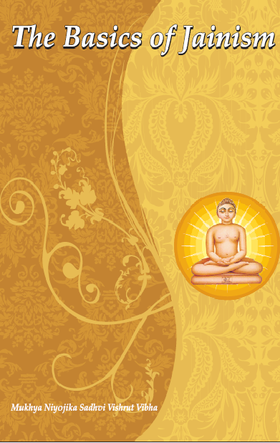One of the significant doctrine propounded by Lord Mahavira is Non-possession. He never employed non-possession as equal distribution of wealth. At that time there people were more conscious to attain tranquility austerity and self-realisation. Acquisition of wealth was considered a great impediment in these pursuits. This led Mahavira to enunciate non-possession as a great vow. He was firm in his opinion that without grasping non-possession spiritualism cannot be comprehended.
Possession means accumulation of wealth and property. According to Lord Mahavira, the body itself is possession, accumulated karma is its possession, money and objects also come here into the category of possession. His most interesting and new interpretations at whatever is different from consciousness with it, and if there is attachment that becomes possession for it. In the absence of attachment, object will not become hindrance in spiritual pursuit. Thus, attachment itself is possession. Object itself is not possession. One who is devoid of attachment, for him object is a mere object, but not the cause of attachment. And one who is filled with attachment for the object, it becomes possession for him.
Thus, possession is of two types:
- Internal possession — Attachment
- External possession — Object
Once Gautama, a senior disciple of Mahavira indicating a beggar said to Mahavira, This beggar is truly non-possessive. He owns 'nothing'.
Is his mind free from desires?
No, it's not so.
How can you call him non-possessive? There are four types of people:
- A man, who possess nothing but his mind is full of attachment and desires.
- A man, who possess objects for sustaining his life, but is free from attachment and desires.
- A man, who possess nothing and is also free from attachment and desires.
- A man, who possess objects and is also filled with attachment and desires.
Lord Mahavira gave an aphorism of restrain on possession to change the direction of a social living being who is possessive by nature. Controlling over the desires leads to internal transformation wherever controlling over the consumption and accumulation of objects leads the external transformation. Restrain on one's desire is a way to limit mental possession whereas restrain on one's desire is a way to limit mental possession whereas restrain on one's consumption is a way to limit individual possession.
On the basis of objects/materials possession can be divided into two forms:
- Alpa-parigraha—Minimum ownership/wealth
- Maha-parigraha—Maximum ownership/wealth
The society at the time of Mahavira was a well-to-do society. It was not a resource less society. It was a prosperous society which was a result of restraint. At that time, there was a system of joint family. There was a family of Anand, a lay-follower of Lord Mahavira. He had a limit of forty million gold coins to be used to earn interest and forty million gold coins to remains in the depository. He relinquished all that was more than this. He had a limit to his possessions of land, building, and cowsheds.
Mahavira did not prescribe any rule for accumulating the wealth. But focused his attention on two major factors:
- The right means in the process of earning money.
- The limitation of personal consumption.
Mahavira had prescribed a schedule of articles of consumption. It was a special list which has never been prepared by economist. Some of the rules governing that list are:
- number of clothes
- quantum of wealth
- quantity of water
- number of vehicles, and so on.
A dedicated person takes a vow, “I shall not keep more than so many clothes.
I shall not use anything more than one shirt or one dhoti at anytime.
For cleaning the body, I will not keep more than one towel." These were the limits followed by a person who possessed millions of gold coins at that time.
A committed person limits the quantity of water being consumed. The misuse of water today is much more than ever before. It cannot be easily imagined how much terrifying the water crisis is going to be in future. A person committed to religious faith limits the use of water by pledging, "I shall not use more than a given number of pitchers of water for bathing."
Modern means of transportation have made the world such a small place that having started in the morning, a person can go to any work to any corner of the country and come back in the evening. But the unnecessary use of transportation leads to waste of fuel and polluted atmosphere.
One must put a limitation on the use of the means of transportation as well. 'Today I will not make use of vehicle more that a given limit'. Put a limitation to travel. 'Today I will not go beyond the limit of one hundred kilometers'. Put a limitation to the use of footwear also. 'I will not use shoes or chappals beyond a limit'.
If this awareness is created, it will result in a considerable amount of restrain. And thus control over the wanton way in which energy and fuel are being wasted can be established.
Mahavira gave these two philosophies for his followers:
- limitation of individual ownership
- Limitation of personal consumption.
Based on these two tenets, the society was developed. As a result, the society pursued a happy, health and peaceful life. Today it is essential that our present-day economists and consumerised people should realize the truth, through which new society can be created.
